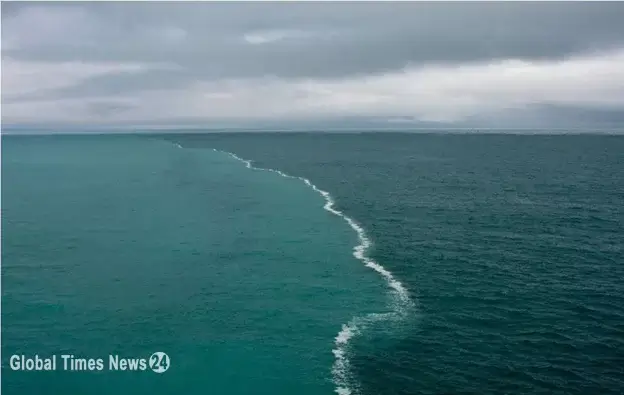The devastating wildfires that swept through parts of Hawaii have claimed more than 100 lives, making it the deadliest inferno in the US in over a century. Authorities warn that the death toll is likely to rise as search and rescue crews continue to comb through the affected areas.
Jeanne Mariani-Belding, a native of Hawaii, expressed her heartbreak over the tragedy. “Lahaina is so much more than a popular tourist spot. It is an area rich in Hawaii’s culture and history, and for many, it is home,” she told Anadolu. Mariani-Belding said that while Hawaii residents are devastated by the loss of life and historical structures, she is optimistic that they will heal and rebuild after this disaster.
The wildfires began raging a week ago on both the Big Island and Maui, fueled by strong winds from Hurricane Dora in the Pacific Ocean. Experts say that these gusts contributed significantly to the rapid spread of the fires. Zong-Liang Yang, a professor at the University of Texas at Austin’s Jackson School of Geosciences, explained that Hurricane Dora intensified the winds in the development stages of the Hawaii wildfires.
Yang also noted that because the strong winds from Hurricane Dora were blowing in the same direction as the trade winds toward Maui – from northeast to southwest – this added extra fuel for the wildfires. “The hurricane made a difference because both sets of winds were blowing in the same direction and joined forces,” he said.
In addition to the strong winds, Yang said that Maui’s already dry topographical conditions were ripe for a fire to rage out of control. “Lahaina is on the leeward side of the mountains, which means the winds climb over the mountains and blow downhill. When winds blow downhill, the air gets more compact and produces higher and dryer temperatures,” he explained.
Yang also pointed out that temperatures in Hawaii have been unprecedentedly dryer and hotter than in previous years due to climate change and global warming. “Scientists had warned of warming climate and heat waves from 20 years ago and because of those worsening circumstances, the storms are becoming more intensified and the chances of wildfires breaking out and spreading are becoming more frequent,” he said.
According to Yang, wildfires in Hawaii are likely to become more frequent in the future, just as they have in states like California, Washington, and Colorado. He also pointed to the recent Canadian wildfires and warned that the chances of blazes breaking out around the world will increase due to the current global climate situation.
“Heat, winds and dryness. The air is dry, the land is dry, and a few weeks of really hot temperatures; those are ripe conditions for fire,” Yang explained. “People have to be really alert in that situation. The weather and climate conditions are conducive for fire.”
As Hawaii’s residents begin the process of recovery and rebuilding, Jeanne Mariani-Belding urged people across the US and around the world to help by contributing to the Hawaii Community Foundation or making a donation to a Hawaii non-profit of their choice. “While these historical structures are gone, I’m hopeful that the spirit and the culture will live on in our hearts and our memories,” she said. “That is so important for future generations.”
News ID : 2377
 Moscow warns tit-for-tat bill if UK passes anti-Russia legislation
World
Moscow warns tit-for-tat bill if UK passes anti-Russia legislation
World
 Russian Official Honors Muslim Teen for Saving Over 100 People During Concert Hall Attack
World / Breaking News
Russian Official Honors Muslim Teen for Saving Over 100 People During Concert Hall Attack
World / Breaking News
 F-16 Fighter Jets for Ukraine: Russian Concerns and Training Initiatives
World / Breaking News
F-16 Fighter Jets for Ukraine: Russian Concerns and Training Initiatives
World / Breaking News
 Netanyahu rejects Biden's cease-fire suggestion and declares to continue the Gaza war
World / Breaking News
Netanyahu rejects Biden's cease-fire suggestion and declares to continue the Gaza war
World / Breaking News
 The Deadliest Job in America
World / Breaking News
The Deadliest Job in America
World / Breaking News
 Historical Figures on Hussain's Sacrifice & Impact
World / Breaking News
Historical Figures on Hussain's Sacrifice & Impact
World / Breaking News
 Why don't the Pacific and Atlantic Oceans mix?
World / Breaking News
Why don't the Pacific and Atlantic Oceans mix?
World / Breaking News
 Nakba 75: Palestinian citizens of Israel are exiles in their own land
World / Opinion
Nakba 75: Palestinian citizens of Israel are exiles in their own land
World / Opinion
 How the Civilization on Easter Island Collapsed
World / Breaking News
How the Civilization on Easter Island Collapsed
World / Breaking News
 10 Reasons to Start business in Dubai
Bussiness / Breaking News
10 Reasons to Start business in Dubai
Bussiness / Breaking News